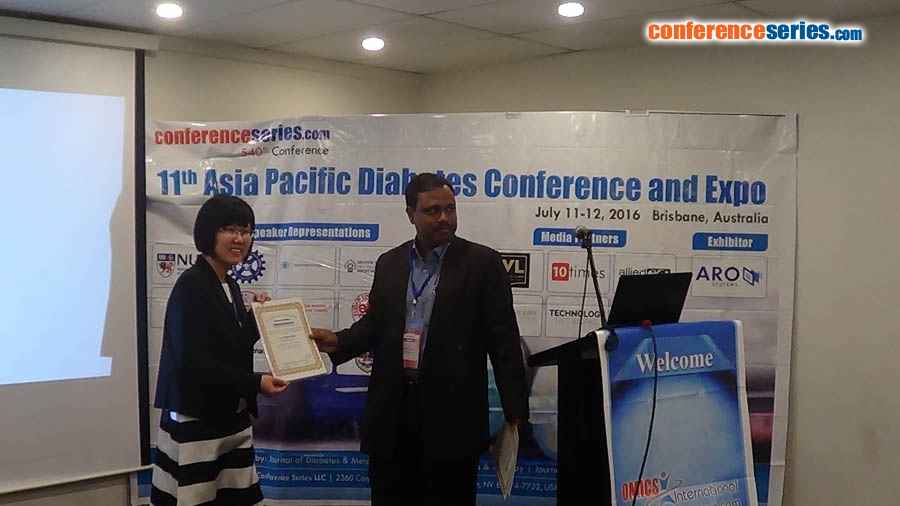Minqian Shen
Fudan University, China
Title: Quantitative proteomic analysis of mice corneal tissues reveals angiogenesis-related proteins involved in corneal neovascularization
Biography
Biography: Minqian Shen
Abstract
Corneal neovascularization (CNV) was induced in Balb/c mice by alkali burns in the central area of the cornea with a diameter of 2.5mm. After 14 days, some eyeballs were enucleated to histological staining to examine CNV, and the corneas from other eyes were harvested to perform label-free proteomics analysis. The label-free quantitative proteomic approach was applied to analyze five normal corneal tissues (normal group mice n=5) and five corresponding neovascularized corneal tissues (model group mice n=5). The protein data were subject to statistical analysis using Maxquant Software. A total of 2124 proteins were identified and 1682 proteins were quantified from these corneal tissues. Among these quantified proteins, 290 proteins were changed significantly. Of these significantly changed proteins, 35 were reported or predicted as angiogenesis-related proteins. Then, these 35 proteins were analyzed using Ingenuity Pathway Analysis Software, resulting in 26 proteins enriched and connected to each other in the protein-protein interaction network, such as LCN-2, αB-crystalline, and PEDF. These three angiogenesis-related proteins were verified by western blotting test. Consistent with the quantitative proteomic results, Western blotting showed that LCN-2 and αB-crystalline were significantly up-regulated in CNV model, while PEDF was down-regulated. This study provided increased understanding of angiogenesis-related proteins involved in corneal vascular development, which will be useful in the ophthalmic clinic of specifically target angiogenesis.




